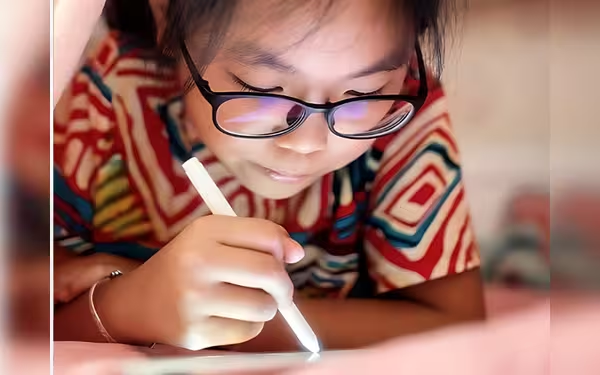Saturday, November 16, 2024 09:29 PM
Global Surge in Childhood Myopia: One in Three Affected
- One in three children globally suffers from myopia.
- Increased screen time linked to rising short-sightedness.
- Outdoor activities crucial for preventing vision problems.
 Image Credits: tribune.com.pk
Image Credits: tribune.com.pkA new study reveals one in three children worldwide is now short-sighted, highlighting the urgent need for better eye health practices.
In recent years, the alarming rise in short-sightedness, or myopia, among children has become a pressing concern for parents and educators alike. A new study published in the British Journal of Ophthalmology reveals that one in three children worldwide is now affected by this vision problem. This statistic is particularly troubling as it highlights a significant shift in the visual health of the younger generation.
The study analyzed data from over five million children and teenagers across 50 countries, providing a comprehensive overview of this growing issue. In regions such as Singapore and Hong Kong, where children often begin their formal education as early as two years old, the situation appears even more severe. These young learners engage in close-range activities, such as reading and using digital devices, which can put a strain on their developing eyes.
Experts suggest that the increase in screen time and reduced outdoor activities are major contributors to this trend. Children today are spending more time indoors, glued to screens for entertainment and education, rather than playing outside in natural light. This lack of outdoor exposure is believed to be a significant factor in the rising rates of myopia.
Furthermore, the implications of this trend are far-reaching. Short-sightedness can lead to various complications, including an increased risk of serious eye conditions later in life. As such, it is crucial for parents and guardians to be proactive in addressing this issue. Encouraging children to take regular breaks from screens, engage in outdoor play, and maintain a healthy distance from reading materials can help mitigate the risks associated with myopia.
The findings of this study serve as a wake-up call for families and educators. As we navigate a world increasingly dominated by technology, it is essential to prioritize the eye health of our children. By fostering habits that promote better vision, we can help ensure that the next generation enjoys a brighter, clearer future.













